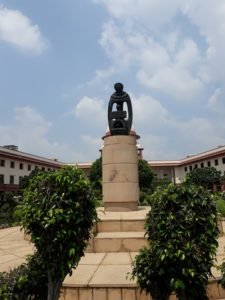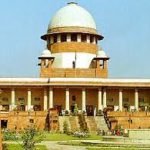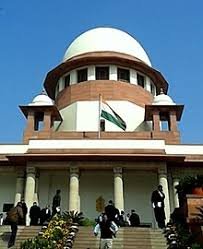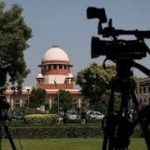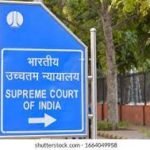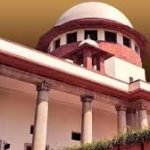The core of the case revolves around a dispute over land in Kodaikanal and a specific performance suit related to a 1991 agreement to sell. A key legal issue addressed is whether a second suit filed in 2007, after an earlier suit from 1993 was dismissed due to non-payment of court fees, is barred by the statute of limitations under the Limitation Act. The court examined the application of Order VII Rule 11(d) of the Code of Civil Procedure, which allows for plaint rejection if a suit appears to be barred by law, and Order VII Rule 13, which permits filing a fresh plaint after a previous one is rejected. The judgment ultimately determined that the second suit was indeed time-barred, highlighting that the right to sue accrued when the first suit was filed in 1993, and the subsequent filing in 2007 fell outside the prescribed limitation period under Article 113 of the Limitation Act.
(A) Civil Procedure Code, 1908, Order 7 Rule 11(d), Order 7 Rule 13 – Limitation Act, 1963, Section 9; Article 54 and 113 – Specific performance – Agreement to sell – Rejection of plaint – Second suit on same cause of action – Limitation – Respondent/plaintiff had filed the suit for specific performance of the agreement to sell dated 26.04.1991 in the year 1993 itself – The plaint in the said suit was rejected on 12.01.1998 – The plaintiff could have filed the second suit on or before 12.01.2001 as it got right to file the suit on 12.01.1998 on the rejection of the plaint in the earlier suit filed by it – This is on the basis of Order 7 Rule 13 of the Code – However, the limitation period expired in January, 2001 itself and the second suit was filed belatedly in the year 2007 – The cause of action by then faded and paled into oblivion – The right to sue stood extinguished – The suit was barred in law as being filed beyond the prescribed period of limitation as per Article 113 to the Schedule to the Limitation Act – Hence the second suit is barred under Order 7 Rule 11(d) of the Cod -. Plaint in O.S No.49/2007 filed by the respondent liable to be rejected even in the absence of any evidence being recorded on the issue of limitation – This is on the admitted facts – Thus, on the basis of Order 7 Rule 11(d) of the Code read with Article 113 of the Limitation Act the impugned orders of the High Court and the trial court are liable to be set aside and by allowing the application filed under Order 7 Rule 11(d) of the Code.
(Para 9.12)
(B) Limitation Act, 1963, Article 113, 54 – Specific performance – Limitation – Second suit – Earlier suit was filed by the respondent/plaintiff in July, 1993 on the basis of Article 54 and the plaint in the said suit was rejected on 12.01.1998 – The second suit being O.S. No.49/2007 was filed on the strength of Order 7 Rule 13 of the Code for the very same cause of action and for seeking the very same relief of specific performance of the agreement dated 26.04.1991 as the plaint in the earlier suit was rejected on 12.01.1998 – Therefore, it cannot be said that the second suit namely O.S. No.49/2007 was filed as per Article 54 of the Limitation Act – Since this is a suit filed for the second time after the rejection of the plaint in the earlier suit, Article 54 of the Limitation Act does not apply to a second suit filed for seeking specific performance of a contract – We have to fall back on Article 113 of the Limitation Act – Under Article 113 of the Limitation Act, time commences to run when the right to sue accrues – This is in contradistinction to Article 54 of the Limitation Act relating to a suit for specific performance of a contract which is on the happening of an event – The expression “when the right to sue accrues” in Article 113 of the Limitation Act need not always mean “when the right to sue first accrues” – For the right to sue to accrue, the right sought to be vindicated in the suit should have already come into existence and there should be an infringement of it or at least a serious threat to infringe the same – Thus, the right to sue under Article 113 of the Limitation Act accrues when there is an accrual of rights asserted in the suit and an unequivocal threat by the defendant to infringe the right asserted by the plaintiff in the suit.
(Para 9.7 to 9.8)
(C) Limitation Act, 1963, Article 113, 54 – Specific performance – Limitation – Second suit – Right to sue – Held that “right to sue” means the right to seek relief by means of legal procedure when the person suing has a substantive and exclusive right to the claim asserted by him and there is an invasion of it or a threat of invasion – When the right to sue accrues, depends, to a large extent on the facts and circumstances of a particular case keeping in view the relief sought – It accrues only when a cause of action arises and for a cause of action to arise, it must be clear that the averments in the plaint, if found correct, should lead to a successful issue – The use of the phrase “right to sue” is synonymous with the phrase “cause of action” and would be in consonance when one uses the word “arises” or “accrues” with it – In the instant case, the right to sue first occurred in the year 1993 as the respondent/plaintiff had filed the first suit then, which is on the premise that it had a cause of action to do so – The said suit was filed within the period of limitation as per Article 54 of the Schedule to the Limitation Act – Article 113 of the Schedule to the Limitation Act provides for a suit to be instituted within three years from the date when the right to sue accrues and not on the happening of an event as stated in Article 54 of the Schedule to the Limitation Act.
(Para 9.8 and 9.9)
Indian Evangelical Lutheran Church V. Sri Bala And Co.
Supreme Court: 2025 INSC 42: (DoJ 08-01-2025)

